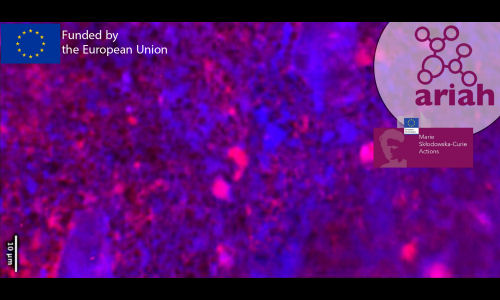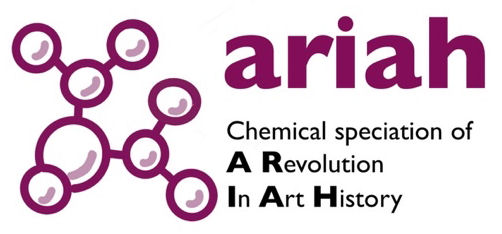 In the framework of the IPERION-HS project (GA871034), we have recently teamed up with the SOLEIL synchrotron facility to analyse mixed-media paints prepared with different methodologies (i.e., tempera grassa, protein-coated pigment in oil). Collaborating with DISCO beamline scientist, Frédéric Jamme, Chloë Coustet and Mathieu Thoury from IPANEMA laboratory, the MSCA fellow Rafaella Georgiou, along with PhD student Giulia Carotti and MSc student Riccardo Ducoli from the University of Pisa, successfully achieved an unprecedented level of clarity in determining the spatial distribution of organic materials (i.e., oil and proteins) within complex mixed-media paints. This was made possible by leveraging the chemical selectivity and sub-micron lateral resolutions provided by deep UV photoluminescence imaging.This information enables us to link the paint preparation method to the microstructure of the paint layer. A special thanks to the DISCO beamline for their warm welcome and support!
In the framework of the IPERION-HS project (GA871034), we have recently teamed up with the SOLEIL synchrotron facility to analyse mixed-media paints prepared with different methodologies (i.e., tempera grassa, protein-coated pigment in oil). Collaborating with DISCO beamline scientist, Frédéric Jamme, Chloë Coustet and Mathieu Thoury from IPANEMA laboratory, the MSCA fellow Rafaella Georgiou, along with PhD student Giulia Carotti and MSc student Riccardo Ducoli from the University of Pisa, successfully achieved an unprecedented level of clarity in determining the spatial distribution of organic materials (i.e., oil and proteins) within complex mixed-media paints. This was made possible by leveraging the chemical selectivity and sub-micron lateral resolutions provided by deep UV photoluminescence imaging.This information enables us to link the paint preparation method to the microstructure of the paint layer. A special thanks to the DISCO beamline for their warm welcome and support!
Photo caption
Deep-UV photoluminescence sub-micro scale image recorded on tempera grassa ultramarine blue model paint cross section in the wavelength ranges (i) 329-351 (red), (ii) 535-607 (blue). Excitation wavelength : 275 nm. We can distinguish the nanoscale distribution of the drying oil (in blue) and the egg white (proteinaceous phase in magenta) in the mixed media paint. The ultramarine blue pigment particles appear in black (no luminescence signal was detectable).







